See How One Of Pakistan’s Famous 10 Billion Tree Tsunami Project Plantations Looks A Year Later
Within the last year, planting trees was the thing to do in easing the negative effects of climate change. This is evident by the slew of various tree-planting initiatives that were organized, including Team Trees where 600 YouTubers pledged to plant 20 million trees, Ethiopia breaking the world record by planting over 350 million trees in half a day, and these 13 feel-good stories about saving our planet.
While the coronavirus has taken over airtime in recent months, the need for tree-planting never went away with many of these initiatives continuing to plant trees. And many are making good progress on their goals.
One such initiative is the 10 Billion Tree Tsunami, Pakistan’s largest ever tree plantation project, which recently had an update on its progress in the form of a before and after video that has been making people gasp in wonder.
It takes years for some of us to get simple things done, but nature is better at reaching its goals
Pakistan’s Advisor to the Minister of Climate Change shared an inspiring before-and-after video of how much the natural landscape in Balloki changed in a year
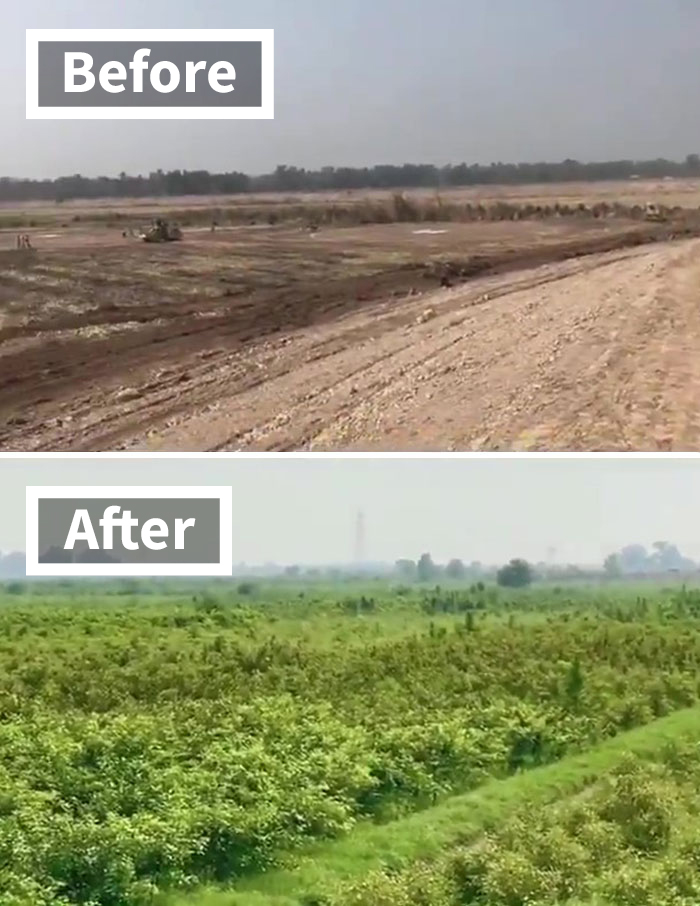
Image credits: Malik Amin Aslam
Malik Amin Aslam, Pakistan’s Advisor to the Prime Minister and Federal Minister of Climate Change, shared a video on his Twitter of what the Balloki Nature Reserve near Lahore in the Punjab district looked like a year ago, and what it looks like now.
The video shows barren land with virtually no greenery for miles, a sight that was seen during Aslam’s visit to the area a year ago. Today, it is a luscious and prosperous area fully paved with grass and trees.
The caption read: “Was a treat to visit #BallokiNatureReserve #Lahore after a year – #PMIK @ImranKhanPTI inaugurated this in 2019 as part of #10BillionTreeTsunami and the plantation results in a year are phenomenal – #Change and #NayaPakistan IA”.
This change is a part of the 10 Billion Tree Tsunami project which aims to reforest Pakistan
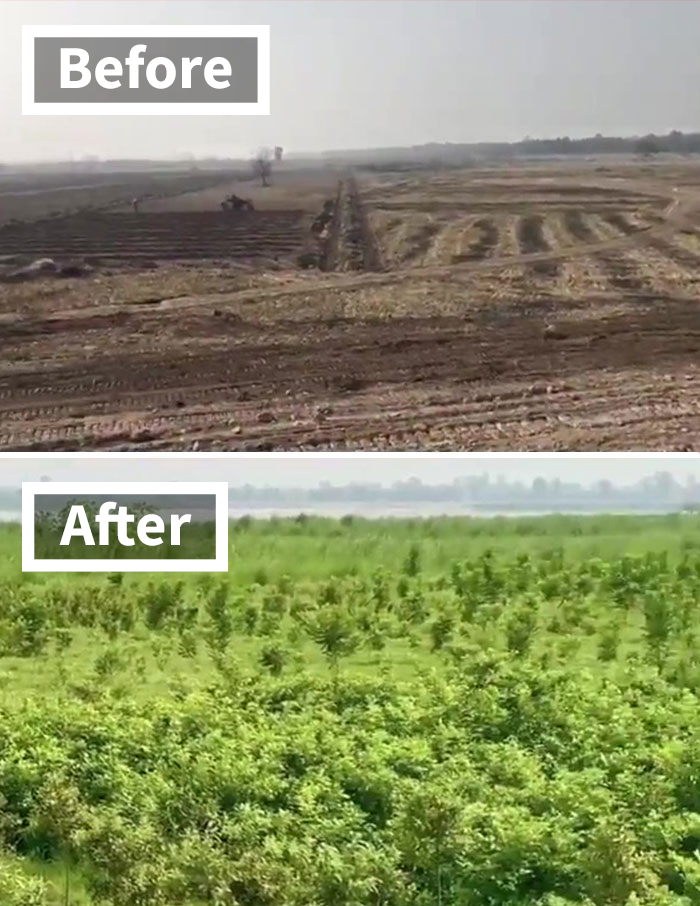
Image credits: Malik Amin Aslam
10 Billion Tree Tsunami is a government launched and funded project to promote reforestation in Pakistan. The project hopes to plant 10 billion trees within the span of five years, and to achieve a number of other objectives, including to increase forest area, rehabilitate degraded forests, to protect green areas and its wildlife, to provide jobs, among many others.
You see, trees help to protect the soil from degradation and to regulate water on farms, mitigate floods, and enrich the soil and surrounding areas with biodiversity. Also, crops grown in forested areas are often more resilient to the impact of droughts, excessive rains, and extreme weather.
The project aims to increase forest area, rehabilitate degraded forests, and protect green areas and the wildlife living in it, among other objectives
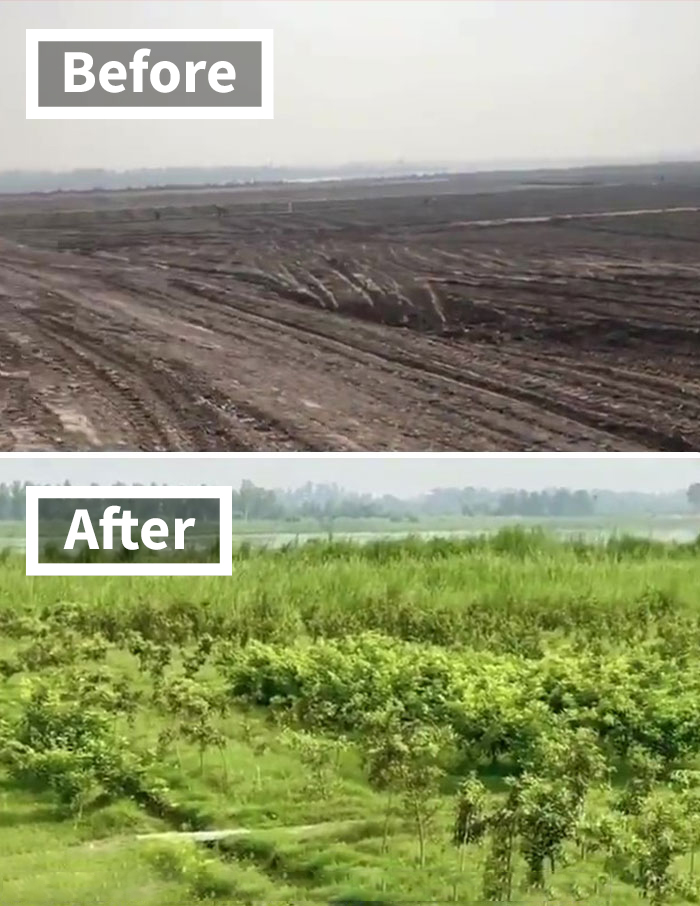
Image credits: Malik Amin Aslam
So far in 2020, 20,798 hectares of plantations were planted to achieve these aims. The Redd Monitor reports that a total of 350,000 hectares of trees were already planted in both planting and natural regeneration form and that the project has also created around 3,500 green enclosures in state-owned forests.
Back in February, the ministry announced their plan to plant 250 million saplings this spring in hopes of populating the bare bits of land around cities. However, it is not clear whether this has been achieved because of the coronavirus and the subsequent lockdown.
The project includes 3 regions with 27 divisions and progress is seen in many locations across the country
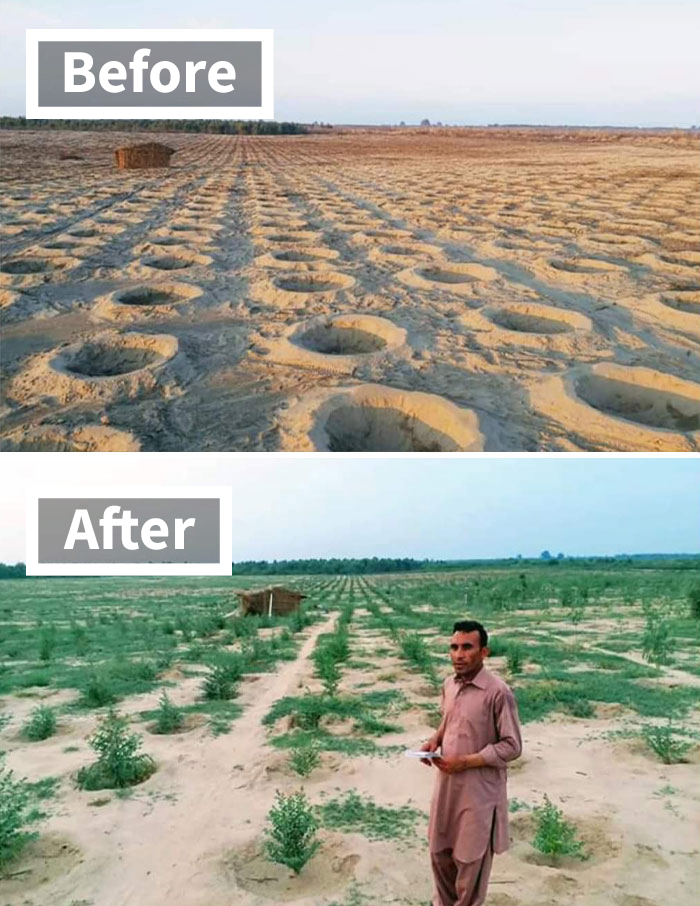
Image credits: Malik Amin Aslam
So far, a total of 350,000 hectares were planted with trees, creating 3,500 green enclosures nation-wide
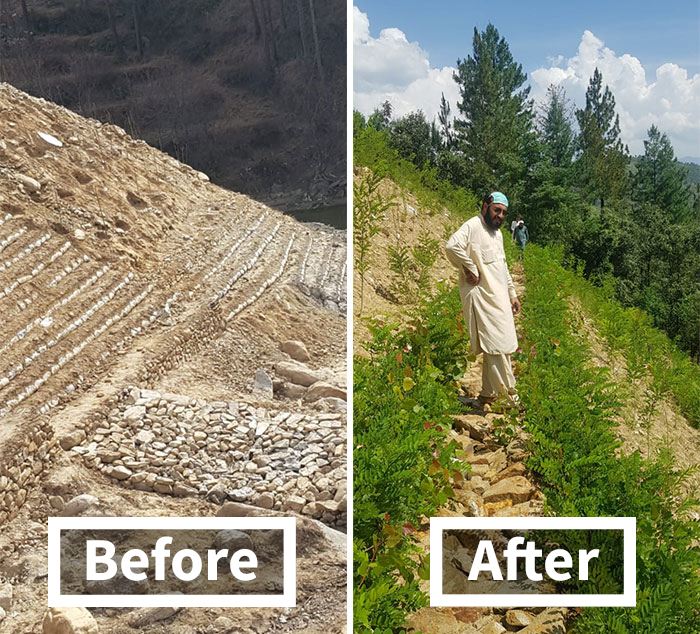
Image credits: Ten Billion Tree Tsunami
The project earned great recognition, including that from the World Economic Forum, WWF, and IUCN
The project has come under fire for a number of reasons. There have been alleged reports of bogus billing, fake plantation, poor quality earthwork, unauthorised payments, and other activities that hint at corruption.
Besides that, it was also reported by the Redd Monitor that the coronavirus lockdown has also led to planters earning around 500 rupees a day—half of what they could on a good day before the pandemic, meaning that they now earn less than minimum wage (which is approx. 800 per day).
Despite this, the project has managed to earn a number of awards and wider recognition over the years, including that from the World Economic Forum, WWF, IUCN, and was ranked 4th biggest initiative by the Plant for Planet Foundation (UNFCCC). And now that people can see more results of the initiative in Aslam’s video, it’s safe to say that the project is going somewhere and both the planet and, subsequently, humanity will benefit from it in the long run.
Besides restoring natural landscapes, the project also plans to create jobs and ensure greater wildlife security
With its 10 billion tree “tsunami”, Pakistan joins a number of other massive tree-planting projects, including the aforementioned Ethiopia’s record-breaking campaign that managed to plant 350 million saplings in 12 hours. Another attempt at breaking the record happened in India, where 1.5 million volunteers planted 66 million trees in the same timespan, showing just how much more natural the world has become over the recent years.
What did you think about this? Have you had a chance to plant a tree, and if so, which one? Let us know in the comment section below!

No comments